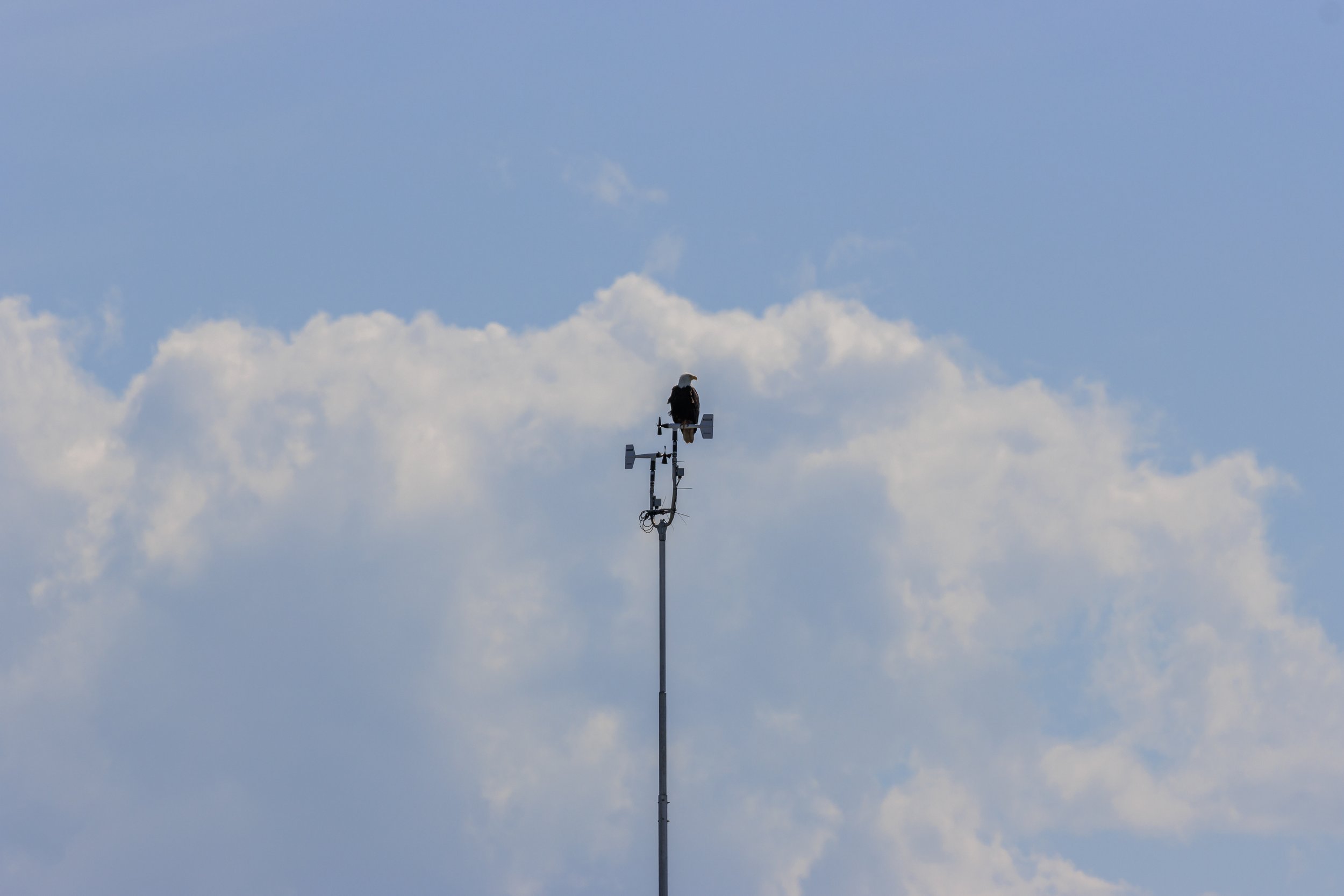May 19, 2023 - Scuba, Schooner, and an Unknown humpback feeding away along the Mainland
May 19th’s encounter was a perfect example of how we are always learning new things about Humpbacks’ behaviour.
On this tour, we encountered two humpbacks lunge feeding together - these Humpbacks were ID’d as Scuba (BCX1193's 2019 calf) and Schooner (BCX1193’s 2021 calf). This is very interesting as these whales are siblings - or at the very least, half-siblings!
The general consensus used to be that Humpbacks are believed to be solitary animals by nature. This seems to be changing as the years go by, as we are seeing fewer and fewer individuals travelling alone and many more small groupings throughout the year. Our yearlings in particular (whales that are in their first year of life without their mother by their side) seem to enjoy staying in groupings all summer long.
Zig Zag (BCX1193) is a known regular in our area. While we haven’t seen her yet this season, we eagerly await her return. This successful momma tends to spend a lot of her time around Porlier Pass and Entrance Island.
Scuba, her 2019 calf, was nicknamed by one of our regulars! They have a black marking on their right fluke that resembles a person diving down into the water - can you spot this marking on the photos below?
We were extra excited to see Scuba today as our last known sighting of them involved them being entangled in fishing gear during very foggy conditions. This entanglement occurred late last year. With heavy hearts, many of us assumed this would be the end for the young whale, as they were not spotted again that season.
Entanglements are very dangerous and can be deadly if the whale is unable to disentangle itself. Canada does have a specialized team of individuals to help assist entangled whales like this daring rescue that happened in October last year, but because of the heavy fog a rescue mission would have been impossible unless they could be relocated during better weather conditions.
Scuba does seem to be sporting some new scars that likely occurred during this entanglement but seems to be in good condition otherwise. We hope this delightful duo continues to thrive and survive for many more years to come!
After departing these two, we located one more shy humpback a little further away. This humpback did not fluke, making ID’ing them difficult. Typically we use the pattern on the bottom of a humpback’s flukes to tell what individual we are looking at, but when we have a non-fluker like this whale present, sometimes we have to rely on their dorsals to ID them. Dorsals can change dramatically due to injury so this isn’t a completely reliable way of ID’ing a whale. Update: This whale kept being seen throughout the year, and we now know that they are ghosts 2021 calf Wisp!
Today’s photos were taken by Aly Kohlman.
Scuba on his side, can you see the pectoral fin? Photo by Aly Kohlman
Schooner at the surface with his nostrils visible. Photo by Aly Kohlman
Scuba. Photo by Aly Kohlman
Schooner. Photo by Aly Kohlman
Schooner going for a dive. Photo by Aly Kohlman
Scuba. Photo by Aly Kohlman
Schooner doing a tail wave. Photo by Aly Kohlman
Schooner. Photo by Aly Kohlman
Our mystery Humpback, Wisp. Photo by Aly Kohlman
Look at those nostrils! You can also see a few tubercles at the surface. Photo by Aly Kohlman
Wisp. Photo by Aly Kohlman
Wisp. Photo by Aly Kohlman
Wisp. Photo by Aly Kohlman
Stellar Sea Lion. Photo by Aly Kohlman
Stellar Sea Lions. Photo by Aly Kohlman
Stellar Sea Lion. Photo by Aly Kohlman
Harbor Seals. Photo by Aly Kohlman
Bald Eagle. Photo by Aly Kohlman
California Sea Lion. Photo by Aly Kohlman
Cormorant. Photo by Aly Kohlman
Pelagic Cormorant. Photo by Aly Kohlman
Cormorant going in for a landing. Can you tell the bird apart from its shadow? Photo by Carmen Murphy
Cormorant. Photo by Carmen Murphy























